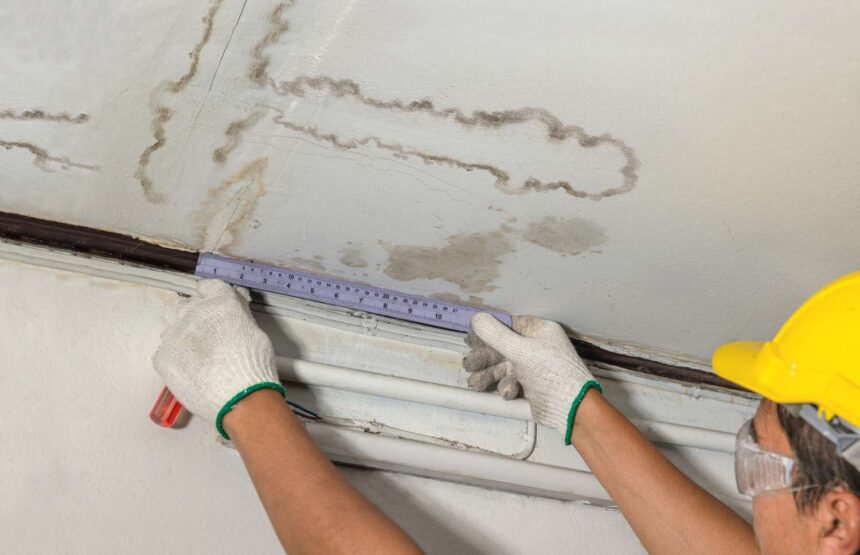Water damage is one of the most common and costly problems homeowners face. Whether it’s from a burst pipe, storm flooding, or a leaking appliance, water can quickly compromise the structure of a home and lead to expensive repairs. One of the first questions most people ask is: “Will my homeowner’s insurance cover the damage?”
The answer depends on several factors, including the source of the water, how quickly you responded, and the specifics of your policy. Not all water damage is treated equally by insurance companies. Understanding what is and isn’t covered can help you avoid unexpected expenses and make informed decisions in an emergency.
Working with experienced restoration professionals like lindstrom restoration can also help you navigate the insurance process and ensure proper documentation is provided for your claim.
Types of Water Damage That Are Typically Covered
Most standard homeowners insurance policies cover “sudden and accidental” water damage. This means that if something unexpected happens—like a washing machine hose suddenly bursting or a pipe freezing and then breaking—the resulting damage is usually covered.
Some examples of covered incidents may include:
- Burst plumbing lines
- Water heater ruptures
- Sudden appliance malfunctions
- Accidental overflows from sinks or tubs
In these scenarios, the cost to dry the area, remove damaged materials, and restore the property is typically included in your policy coverage. However, policies rarely cover the source of the problem—so you might have to pay out of pocket to replace the appliance or pipe that caused the issue.
Common Exclusions in Insurance Coverage
While many forms of sudden water damage are covered, policies also have clear exclusions. Gradual water damage—caused by long-term leaks, unresolved maintenance issues, or neglect—is usually not covered.
Additionally, most standard policies do not cover damage caused by natural flooding, such as:
- Heavy rain overflow
- River or lake flooding
- Storm surge
- Sewer backup or sump pump failure (unless specific endorsements are added)
To be protected against these risks, homeowners typically need a separate flood insurance policy through the National Flood Insurance Program (NFIP) or a private insurer.
The Importance of Timely Reporting
Timing plays a critical role in whether your insurance claim will be approved. Most policies require you to report the damage promptly and take reasonable steps to mitigate further loss. Delaying the response can lead to more extensive damage—and your insurer may argue that the resulting issues were avoidable.
Restoration companies understand the urgency and act quickly to begin mitigation. They also work closely with insurers to make sure claims are filed properly and on time.
Documentation—including photos, moisture readings, and repair estimates—is essential. That’s why hiring a trusted water damage restoration company is one of the best steps you can take to support a successful insurance claim.
What to Expect from the Claims Process
Once you report water damage to your insurance company, an adjuster will be assigned to your case. Their role is to evaluate the damage and determine how much the insurance company will pay.
Here’s what to expect:
- Initial inspection – The adjuster visits the property to examine the extent of damage.
- Claim documentation – You and your restoration provider submit evidence, including photographs, measurements, and cost estimates.
- Review and approval – The insurer reviews the case and may request additional info before issuing a decision.
- Payout – If approved, a settlement check is issued based on policy coverage limits and your deductible.
Keep in mind that payouts may not cover full replacement costs if your policy is based on actual cash value (ACV) instead of replacement cost value (RCV). Understanding the terms of your policy is key to managing expectations.
Working with Restoration Experts on Insurance Claims
Restoration companies don’t just clean up the damage—they also streamline the insurance process. Experienced contractors understand the documentation and communication required by insurance providers and can handle much of the back-and-forth for you.
Their involvement also ensures that no damage goes unnoticed or undocumented. From drying wet drywall to tracking moisture in flooring and insulation, professionals can catch details that may not be obvious but are essential for accurate claims.
Choosing a reputable team makes the process faster, easier, and more likely to result in a fair settlement.
Conclusion
Water damage may or may not be covered by your homeowner’s insurance—depending on the source, timing, and type of policy you hold. Sudden, accidental incidents are usually included, while long-term leaks and external flooding are often excluded.
Understanding your coverage, acting quickly, and working with an experienced restoration company can make all the difference. The right support helps you get the repairs you need—without unnecessary delays or out-of-pocket surprises.


